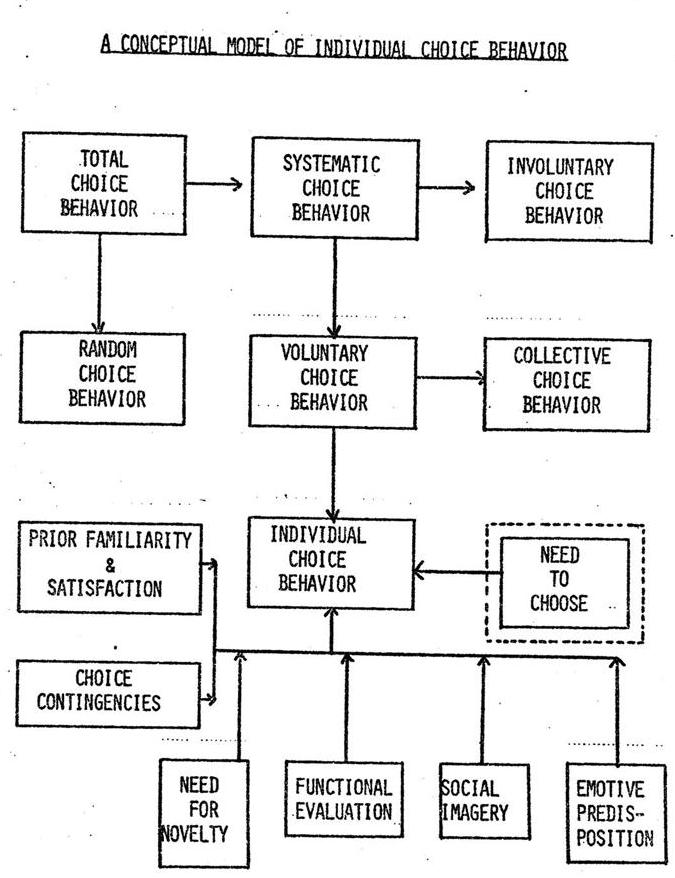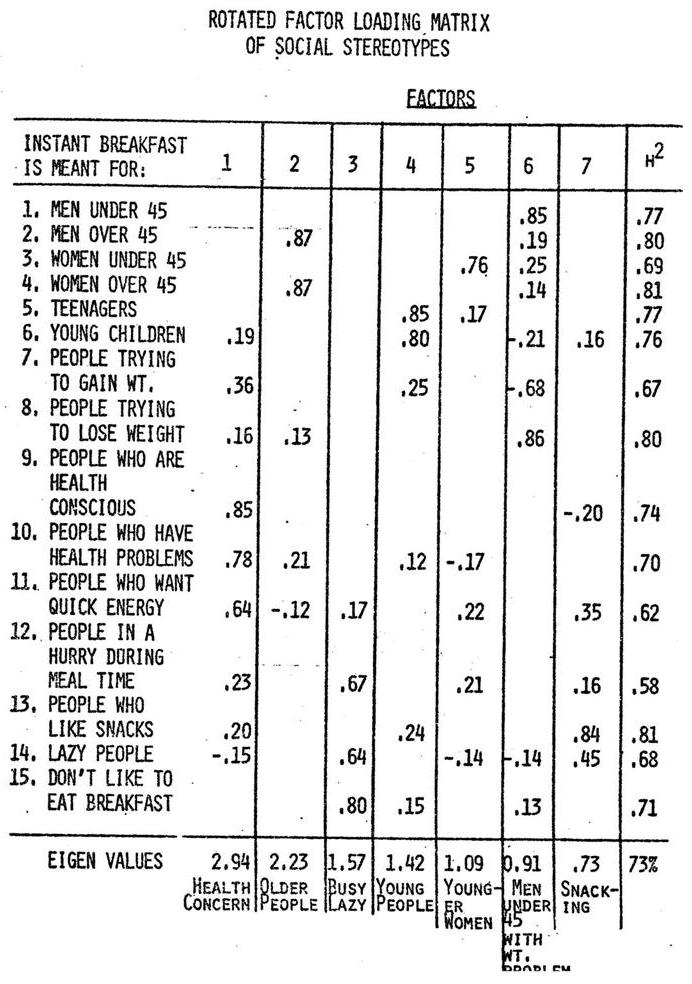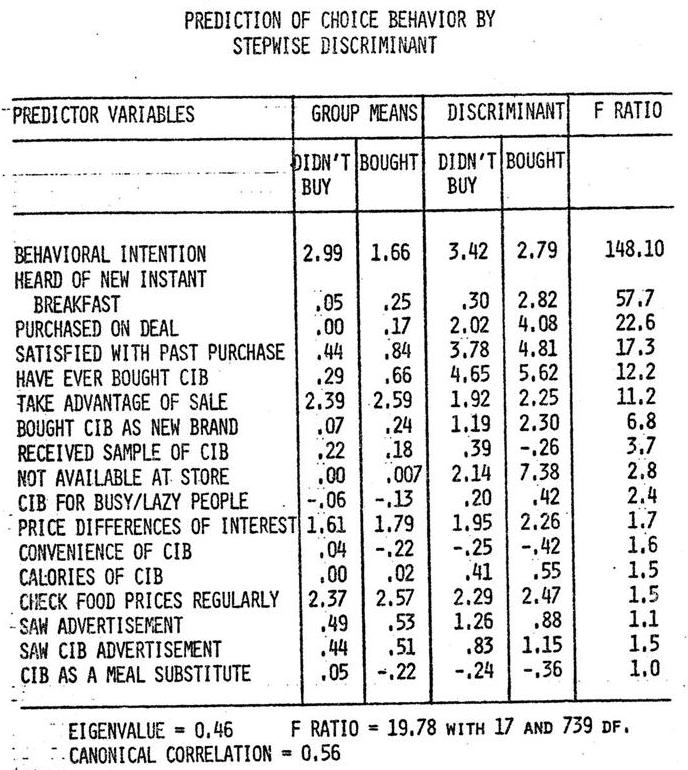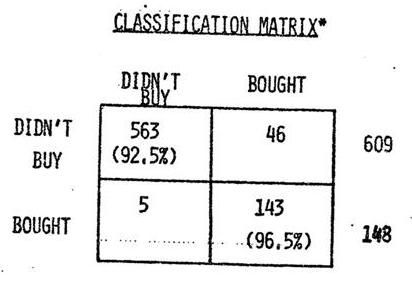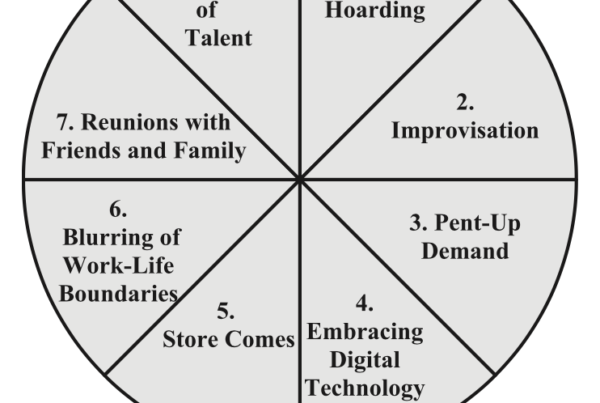Jagdish N. Sheth, University Of Illinois
Importance of Modeling Individual Choice Behavior
- The objective of this paper is to develop a comprehensive model of individual choice behavior based on a review of similar attempts in many disciplines.
- Predicting and explaining how and why individuals choose a particular alternative among many available alternatives has been of great interest and importance to the following disciplines:
- Economics – classical utility theory, recent criterial utility theory and numerous income hypotheses.
- Sociology – social stratification and life style theories of consumption plus diffusion of innovations.
- Social psychology – group dynamics and social interaction theories.
- Psychology – cognitive consistency, attitudes theories, learning and conditioning plus situational and motivational influences on choice behavior.
- Decision theory — problem-solving, statistical decision theory and game theory.
Some of the Limitations of Existing Models
- They are at best partial explanations because of strong specializations of the disciplines.
- Dichotomy between descriptive models and mathematical models.
- Dichotomy between normative and positive models.
- Some issues remain unanswered: do people choose rationally or emotionally?
- Are individuals capable of evaluating alternatives?
- Should one rely on the subjective perceptions of the individual or the objective reality?
- What is the underlying human calculus in making choice judgments?
- Does man control his own destiny or is it the environment?
- How important are social norms?
- Is the process of choice cognitive, emotive or behavioral?
Some Explanations about the Model
- Need to choose is necessary only when we have a mixture of respondents in a sample whose time and place of a specific choice behavior varies as it is most common in cross-sectional surveys.
- There may be some degree of correlations among various constructs in the model which needs to be empirically verified and analytically taken care of.
- Interactions or sequential linkages among variables of the model are ignored for the time being.
- The relative importance of variables in contributing toward a systematic choice will vary across situations and across individuals. However, there is no theory about situation and individual differences.
Definitions of the Constructs in the Model
- Prior familiarity and satisfaction refers to the, degree of knowledge and familiarity about the choice alternatives, greater the prior familiarity, higher the probability of choosing the alternative.
- Choice contingencies refers to the common situational influences which intervene between individual’s feelings and his choice behavior. They are the ceteris pariba of human choice behavior, greater the number of choice contingencies, less stable the probability of choice.
- Need for novelty reflects the curiosity – exploratory behavioral tendency on the part of the individual, greater the need for novelty, more is the likelihood of choosing innovative alternatives.
- Functional evaluation refers to the valuation of an alternative on those salient criteria which represent the functional purpose for the existence of the alternative. It is usually a profile of evaluation on multiple attributes, greater the positive evaluation the higher the probability of choosing it.
- Social imagery reflects the positive or negative social stereotype associated with the alternative based on its linkage to certain demographic, socioeconomic and culture-ethnic segments of the society greater the positive social imagery, higher the probability of choosing that alternative.
- Emotional predispositions refers to the emotional feelings such as fear, aesthetics, love, respect, and anger which are aroused by the choice alternative. The emotional predispositions can be both cognitive or noncognitive. However, there is no deliberate cognitive structure underlying these feelings which the respondent can explain in terms of beliefs, greater the positive emotional feelings, greater the likelihood of choosing an alternative.
Columbia Buyer Behavior Project
Prior familiarity and satisfaction
- Have you ever used CIB before?
- Are you satisfied enough to buy it again?
Choice Contingencies
- I check prices of food items regularly.
- I take advantage of sales b( shopping in different stores.
- Budget determines what we eat.
- Differences in prices of items are of great importance to me.
- Purchased CIB on a deal.
- Received free sample of CIB.
- Brand not available at time of purchase.
- Received coupon for CIB.
- Heard unfavorable comments about CIB.
Need For Novelty
- Heard of a new brand of instant breakfast.
- Purchased CIB as a new brand.
- Saw advertisements of instant breakfast.
Functional Evaluation
Ratings of CIB on thirteen attributes as listed on next page.
Social Imagery
Ratings of CIB on its appropriateness to different types of people as given on next page.
Emotive predispositions
Like-dislike of CIB in general.
* The criterion utilized to classify respondents given their discriminant scores and posterior probability of belonging in a group is as follows:
(Probability for misclassification) < (1-Chance Probability) = 1- .685 = .315.
This is more appropriate than the arbitrary cut off point of 0.50 which is based on equal sample sizes between groups.


